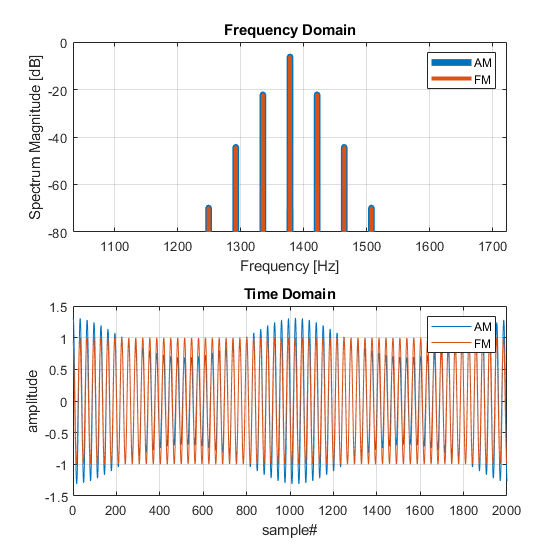Let’s get this out of the way first: Doppler distortion is a form of IMD. This is interesting because IMD in general tends to get little interest on loudspeaker forums, whereas Doppler distortion is often made a big deal of.
Any distortion process will cause both harmonic and intermodulation distortion. After all, harmonic distortion is nothing more than a single sine wave modulating itself. Sometimes you get phase modulation, sometimes amplitude modulation, often a mix of both. As demonstrated in another blog post, a drooping Bl curve will cause a mid-frequency signal to be amplitude modulated by a low-frequency one. Doppler distortion will cause the mid-frequency signal to be phase modulated.
The problem is, you can’t easily see from a spectral plot which of the two is actually the case. In fact, you can’t see it at all. That is because spectral plots don’t show phase information. It’s often assumed that this information doesn’t matter i.e. that you can simply gauge the audibility of distortion products by looking how tall they are compared to the signal.
I’d like to offer up a small demo to caution against this form of Popular Psychoacoustics. Below are two signals whose power spectra are completely identical. Only the phase relationships are different. One is a pure amplitude modulated signal, the other is its purely phase modulated counterpart. The carrier frequency is 1.38kHz, the modulation frequency is 43Hz. The phase modulated signal (labelled FM on the graph, it’s the same thing) corresponds to the Doppler distortion caused by a cone excursion of +/-12.5mm. That’s right: a peak to peak displacement of an entire Imperial Carpentry Unit, give or take a gnat’s whisker.

Pure AM modulation: (PureAM.wav)
Pure FM modulation: (PureFM.wav)
Put on a pair of headphones and listen to both. I’ll leave you to draw your own conclusions.